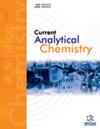Magnetite Reduced Graphene Oxide/Ordered Mesoporous Carbon Nanocomposite as Effective Adsorbent for Removal of 2-Naphthol in Wastewater
IF 1.7
4区 化学
Q3 CHEMISTRY, ANALYTICAL
引用次数: 0
Abstract
Background: The wastewater released from various industries contains substantial amounts of organic compounds such as dyes and naphthols. However, naphthols are toxic to the environment and human health. So, it is essential to eliminate them, which will contribute to manufacturing and environmental management. Methods: In the work, an eco-friendly method is adapted to synthesize reduced graphene oxide (rGO) using Equisetum arvense plant extract as a strong reducing and stabilizing agent. Then, a hybrid nano adsorbent based on rGO and ordered mesoporous carbon (CMK-3) decorated with iron oxide nanoparticles (Fe3O4@rGO/CMK-3) was prepared as an adsorbent. We investigate the performance of Fe3O4@rGO/CMK-3 to remove 2-naphthol (2-NP). Results: The FE-SEM images exhibited spherical magnetite nanoparticles with sizes ranging from 31 to 47 nm on composite. Efficient removal (90%) of 2-NP from aqueous solution is demonstrated using high surface area Fe3O4@rGO/CMK-3 (initial concentration of 2-NP: 10 mg mL-1, pH: 5.0, time: 30 min, and amount of adsorbent dosage: 3 mg mL-1). The high surface area of Fe3O4@rGO/CMK-3, hydrogen binding, π-π stacking interaction between the benzene rings of 2-NP and graphitic skeleton of hybrid adsorbent facilitate the adsorption of 2-NP on the Fe3O4@rGO/CMK-3. The 2NP removal capacity by Fe3O4@rGO/CMK-3 showed a significant decrease during five successive cycles. Conclusions: These results promise the potential of high surface area Fe3O4@rGO/CMK-3 for efficient removal of 2-NP for wastewater treatment.磁铁矿还原石墨烯氧化物/有序介孔碳纳米复合材料作为去除废水中 2-萘酚的有效吸附剂
背景:各种工业排放的废水中含有大量有机化合物,如染料和萘酚。然而,萘酚对环境和人类健康有毒。因此,必须消除它们,这将有助于生产和环境管理。方法:在这项工作中,采用了一种生态友好型方法,以马钱子植物提取物作为强还原剂和稳定剂,合成还原型氧化石墨烯(rGO)。然后,制备了一种基于还原氧化石墨烯和有序介孔碳(CMK-3)并装饰有氧化铁纳米颗粒(Fe3O4@rGO/CMK-3)的混合纳米吸附剂。我们研究了 Fe3O4@rGO/CMK-3 去除 2-萘酚(2-NP)的性能。结果:FE-SEM 图像显示,复合材料上的磁铁矿纳米颗粒呈球形,大小为 31 至 47 nm。使用高比表面积的 Fe3O4@rGO/CMK-3(2-NP 的初始浓度为 10 mg mL-1,pH 值为 5.0,吸附时间为 30 分钟,吸附量为 0.5 mg mL-1)可以有效去除水溶液中的 2-NP(90%):30 分钟,吸附剂用量为 3 mg mL-1):3 毫克毫升-1)。Fe3O4@rGO/CMK-3 的高比表面积、氢结合、2-NP 苯环与杂化吸附剂石墨骨架之间的 π-π 堆积相互作用促进了 2-NP 在 Fe3O4@rGO/CMK-3 上的吸附。在连续五个循环中,Fe3O4@rGO/CMK-3 对 2-NP 的去除能力显著下降。结论:这些结果证明了高比表面积 Fe3O4@rGO/CMK-3 在废水处理中高效去除 2-NP 的潜力。
本文章由计算机程序翻译,如有差异,请以英文原文为准。
求助全文
约1分钟内获得全文
求助全文
来源期刊

Current Analytical Chemistry
化学-分析化学
CiteScore
4.10
自引率
0.00%
发文量
90
审稿时长
9 months
期刊介绍:
Current Analytical Chemistry publishes full-length/mini reviews and original research articles on the most recent advances in analytical chemistry. All aspects of the field are represented, including analytical methodology, techniques, and instrumentation in both fundamental and applied research topics of interest to the broad readership of the journal. Current Analytical Chemistry strives to serve as an authoritative source of information in analytical chemistry and in related applications such as biochemical analysis, pharmaceutical research, quantitative biological imaging, novel sensors, and nanotechnology.
 求助内容:
求助内容: 应助结果提醒方式:
应助结果提醒方式:


